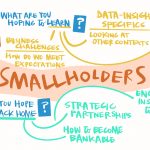Over the years, there has been a growing need for support for Medium to Small Market Enterprises (MSMEs) in Africa. These enterprises play a crucial role in driving economic growth and development, creating jobs and improving the standard of living for millions of people. However, the challenge has been to effectively onboard and support these MSMEs, as many of them face significant barriers in accessing the resources they need to grow and succeed.
As an expert in onboarding clients and mobilizing applications, I have worked with multiple projects to help MSMEs access the support they need. Through my years of experience, I have mobilized more than 50,000 applications from all over Africa, but unfortunately, due to limited capacity, many of these applicants do not end up being onboarded.
One of the key challenges in working with MSMEs is identifying which enterprises to work with and how to reach out to them. To overcome this challenge, I have found it useful to continually build a database of entrepreneurs, where organizations can store the details of any entrepreneurs they have had a conversation with or received an application from. This database can then be used to contact potential clients/beneficiaries in the future and share any opportunities that may be of interest.
The call for applications is a critical component of the onboarding process, and there are several strategies that organizations can use to effectively reach their target audience. Collaborating with allied organizations, working with social media influencers, using the mainstream media, sending bulk emails, and leveraging digital platforms like social media are all effective ways to publicize the call for applications. It is important to have high-quality, catchy content to share in these platforms, including social media copies, email templates, and platform-specific content developed in the form of text, graphics, images, and short videos. Localizing the language used is also critical for ensuring effective communication with the target audience.
The onboarding process itself can vary significantly depending on the needs of the organization and what they are looking to achieve. A call for applications paradigm that contains clear guidelines and evaluation criteria is an essential first step. Having a mechanism for receiving applications, such as an online portal or physical forms, is also critical. Another effective onboarding strategy is to run challenges, where applicants submit their ideas and projects, which are then evaluated by a panel of experts and several finalists go through a pitching competition. This process not only engages the applicants and provides valuable exposure, but it also opens up opportunities for other organizations and partners to get involved.
I have had the opportunity to work with some of the leading organizations in this space and have run several successful calls for applications. For example, I collaborated with KCL, Africa Development Bank (AfDB), and Global Center on Adaptation to mobilize 2,010 applications into their #YouthADAPT programme, which seeks to promote the capacity of young entrepreneurs in Africa to provide innovative solutions to climate adaptation and resilience. From the 2,010 applicants, 10 were selected to receive mentorship and financing of up to USD 100,000 each. I also ran the No Waste Challenge by What Design Can Do and IKEA Foundation, which received 118 unique projects, and the AgriBiz programme by DANIDA and EU, which received over 45,000 applications.
Organizations looking to onboard MSMEs and support their growth and development must engage with experts who have a deep understanding of the sector and the target audience. The expert can then customize strategies to suit the specific needs of the organization and ensure that they receive high-quality applications for their programmes. If you would like more information on this topic, please feel free to reach out to me at consult@solomonirungu.com or call me at +254725961921.



